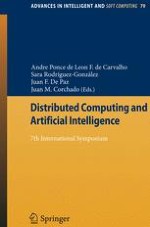The International Symposium on Distributed Computing and Artificial Intel- gence (DCAI´10) is an annual forum that brings together past experience, current work and promising future trends associated with distributed computing, artificial intelligence and their application to provide efficient solutions to real problems. This symposium is organized by the Biomedicine, Intelligent System and Edu- tional Technology Research Group (http://bisite. usal. es/) of the University of - lamanca. The present edition has been held at the Polytechnic University of - lencia, from 7 to 10 September 2010, within the Congreso Español de Informática (CEDI 2010). Technology transfer in this field is still a challenge, with a large gap between academic research and industrial products. This edition of DCAI aims at contributing to reduce this gap, with a stimulating and productive forum where these communities can work towards future cooperation with social and econo- cal benefits. This conference is the forum in which to present application of in- vative techniques to complex problems. Artificial intelligence is changing our - ciety. Its application in distributed environments, such as internet, electronic commerce, environment monitoring, mobile communications, wireless devices, distributed computing, to cite some, is continuously increasing, becoming an e- ment of high added value with social and economic potential, both industry, life quality and research. These technologies are changing constantly as a result of the large research and technical effort being undertaken in universities, companies.
